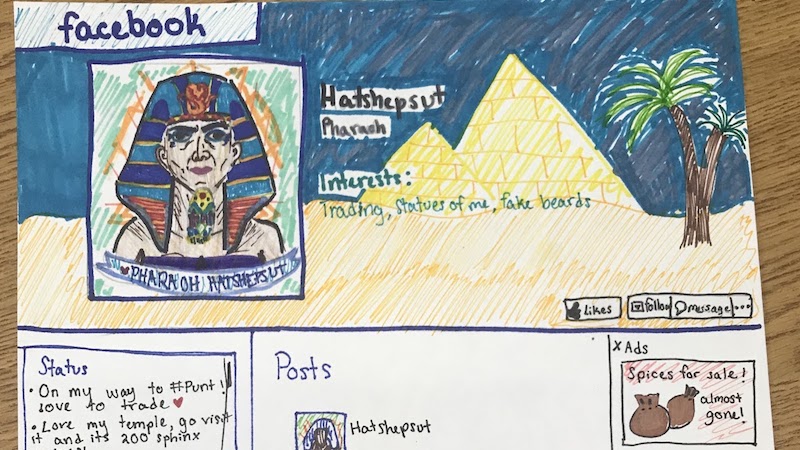Introduction
As an innovative approach to make history more engaging and relatable for students, the concept of creating “Fakebook” profiles for historical figures has gained popularity in recent times. These profiles serve as an interactive platform that allows students to dive deep into the lives and achievements of famous personalities throughout history. This article will explore the rationale behind this creative teaching method, its benefits, and suggestions for implementing it effectively in the classroom.
The Rationale Behind “Fakebook” Profiles
Teaching history can often be a challenging task as it requires students to visualize and empathize with people and events of the past. Traditional methods of teaching may fail to keep them engaged or interested in the subject. “Fakebook” profiles for historical figures address this issue by adding a modern twist to studying history. Students are encouraged to create social media profiles for these personalities, allowing them to relate better since they are already familiar with popular social media platforms.
Benefits of Using “Fakebook” Profiles in Teaching History
1. Enhanced engagement: By transforming passive learning into an active and hands-on experience, “Fakebook” profiles help make history lessons more enjoyable for students. They are more likely to remain engaged in the subject matter and develop a genuine interest in learning about historical events.
2. Improved understanding: Creating these profiles requires students to conduct thorough research on their assigned historical figure. As they delve deep into their lives, beliefs, achievements, and struggles, they gain broader knowledge and comprehension of the era.
3. Creativity boost: Designing a “Fakebook” profile for a historical figure unleashes the student’s imagination and creativity. They can express themselves through storytelling and role-playing while gaining a deeper understanding of these influential individuals’ lives.
4. Promotes critical thinking: As students interact with one another through their created profiles, they are encouraged to analyze and interpret information from different perspectives. This helps promote critical thinking and enhances their problem-solving skills.
5. Collaboration and communication: Working together on “Fakebook” profiles allows students to strengthen their collaboration and communication skills. They can discuss, share, and provide feedback on each other’s work in a real-time, interactive manner.
Implementing “Fakebook” Profiles in the Classroom
1. Assign appropriate historical figures: Teachers should assign students historical figures that align with the curriculum they are currently studying. It would help if they covered various aspects of history, such as politics, art, science, literature, or sports legends.
2. Prepare guidelines and templates: Before allowing students to create profiles, teachers must provide clear instructions and guidelines. Students should understand the expectations regarding profile elements and how to research their historical figure accurately.
3. Encourage creativity and personalization: Teachers should motivate students to make their profiles unique and visually appealing by leveraging distinct layouts, themes, signatures, or symbols associated with the historical figure.
4. Set up group activities: Teachers can organize different group activities using the created profiles such as debates or Q&A sessions among the historical figures to improve class interaction and engagement.
5. Reflect on learning outcomes: Once the “Fakebook” project is completed, teachers must allow students to reflect upon what they have learned during the process. Discussing how it enriched their understanding of history will help reinforce its invaluable lessons.
Conclusion
“Fakebook” profiles for historical figures present an exciting opportunity for both educators and students to enhance the study of history. By leveraging this innovative approach, teachers can significantly heighten student engagement levels while simultaneously fostering creativity, collaboration, critical thinking skills, and a deeper appreciation for a vibrant subject like history.

